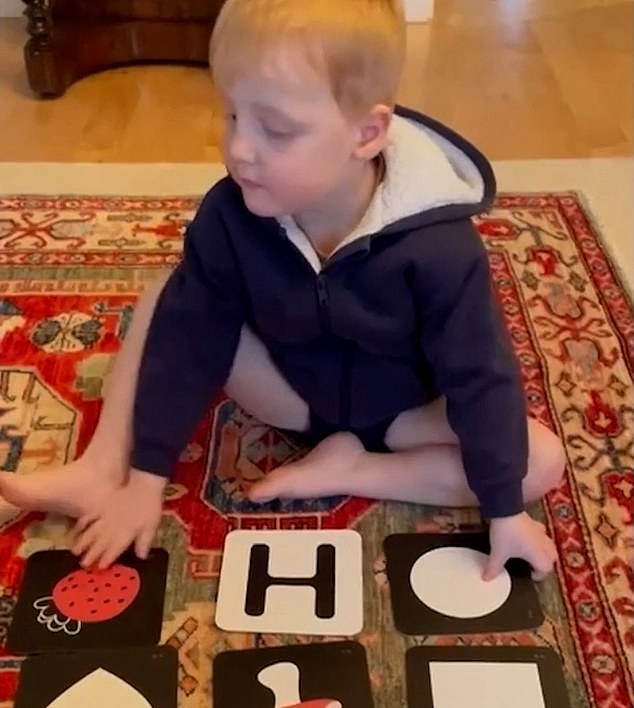hospital.
Children, who suffer from a very rare genetic disorder, can perceive shapes, locate objects such as toys, identify facial features, and in some instances, can even read and write.
They were born with a rare and severe visual impairment caused by a genetic defect that affects the AIPL1 gene.
This condition, also known as Leber Congenital Amaurosis, is a type of retinal dystrophy where babies' vision deteriorates rapidly from birth, and they can only perceive light and darkness.
Individuals born with this condition are typically classified as legally blind and are eligible for a transformative surgery until the age of four.
It is the first truly effective treatment globally for the most severe form of childhood blindness and it only requires an hour.
The straightforward process involves injecting healthy copies of the impacted gene into the rear of one eye to stimulate sensitivity.
Eleven individuals were selected by experts from Moorfields and the UCL Institute of Ophthalmology in 2020, and the operations took place at Great Ormond Street Hospital.



The condition is so uncommon that children had to be recruited from all around the world for the treatment, with families traveling to London from the United States, Turkey, and Tunisia.
Jace, who is from Connecticut in the United States, underwent gene therapy in London at the age of two.
When he was a young infant, his parents observed that there were some issues with his eyesight.
'Around eight weeks old, when babies typically begin looking at you and smiling, Jace had not yet developed this behavior,' his mother DJ said to the BBC.
Following multiple visits to medical professionals and a series of examinations, the family received the diagnosis that Jace was suffering from a very rare condition.
'You never think it's going to happen to you, of course, but there was a great deal of comfort and reassurance in finally learning the diagnosis... because it provided us with a path forward,' Jace's dad Brendan said.
The family was attending a conference on the eye condition when they learned about the experimental trial being conducted in London.
Jace's surgery was quick and 'pretty easy', his mother stated, resulting in only four small scars on his eye.




In the initial month following the treatment, Brendan observed Jace squinting for the first time when looking at the bright sunlight shining through the windows of their home.
His son's development has been 'pretty amazing'.
Prior to surgery, we could hold an object close to his face and he wouldn't be able to track it at all.
'Now he's picking things off the floor, he's collecting toys, performing actions triggered by his sight that he wouldn't have done before.'
"It's truly challenging to downplay the significant effects of having a small amount of vision," Brendan said.
The gene therapy was only administered to one eye in four patients to address potential safety concerns.
Then, another group of seven children were treated in both eyes. All 11 had significant improvements in their vision after the treatment, regaining their sight.
The new genetic treatment originated with the biotechnology company MeiraGTx.

"We are extremely thrilled to observe the profoundly transformative impact of treatment on each and every one of the young children who received this genetic therapy," said Dr. Alexandria Forbes, president and chief executive officer of MeiraGTx.
'The enhancements demonstrated are unmatched in terms of treatment benefits when compared to any ocular gene therapy for IRD. These enhancements go beyond meaningful effects on vision and result in life-changing benefits in all areas of development, including communication, behavior, education, emotional well-being, psychological benefits, and social integration.'
Professor James Bainbridge, a consultant retinal surgeon at Moorfields and professor of retinal studies at the UCL Institute of Ophthalmology, stated: 'The parents report that the children have gained confidence in terms of their mobility, independence, and ability to navigate their surroundings, as well as in recognizing shapes, faces, and images.'
'Some children are even able to read and write following the intervention, which is something one would not normally expect to see in untreated cases.'
Researchers stated that the latest discoveries provide optimism that kids who are affected by both rare and more common types of inherited blindness may eventually benefit from genetic treatments.
Furthers studies are underway to verify the initial findings, which were published in The Lancet Medical Journal.
Read more